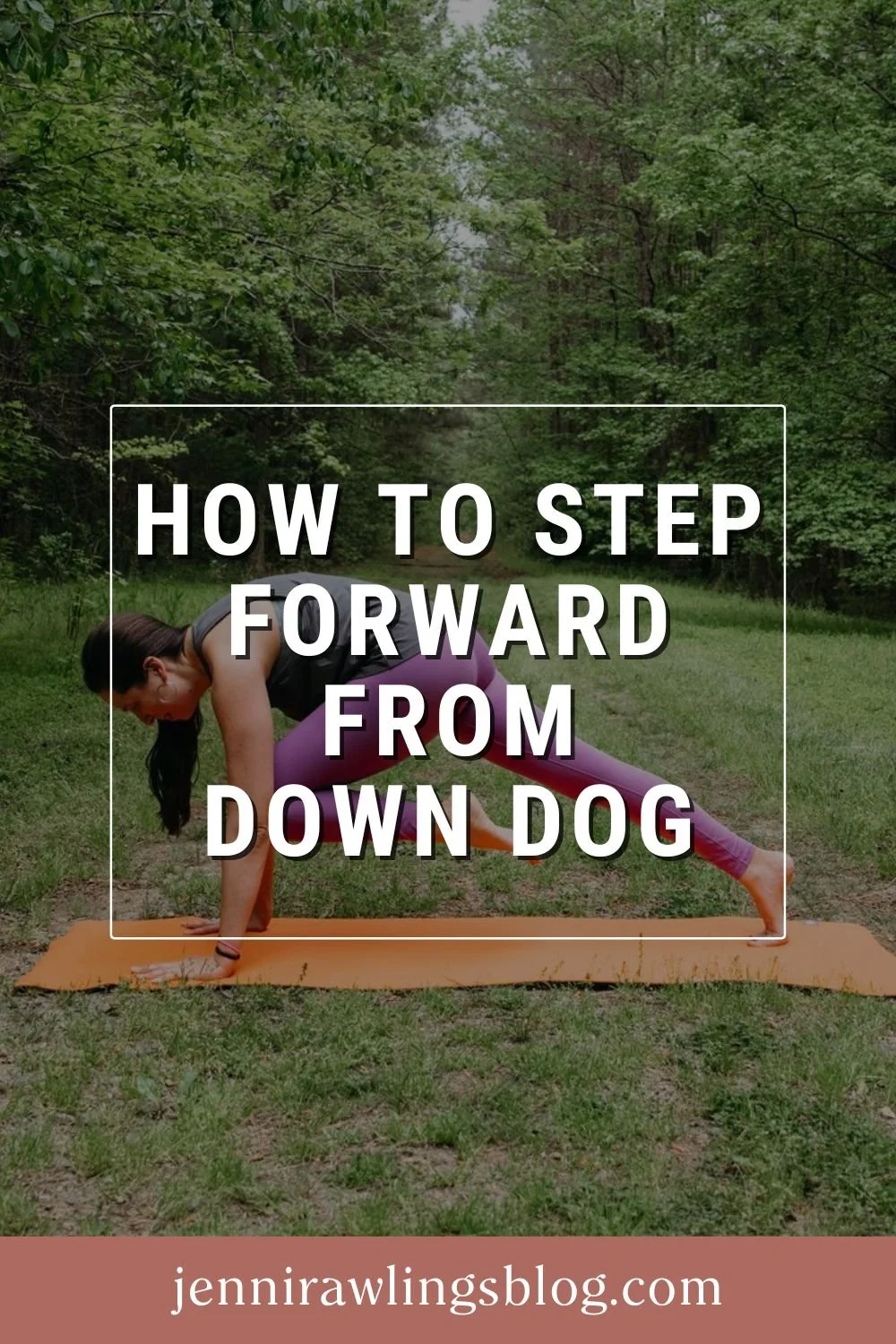Does Bending the Knees Protect the Hamstrings?
This blog post was first sent to Jenni’s email list as an email newsletter. Sign up for the JRY email newsletter here!
A common instruction in forward folds in yoga is to "bend the knees to protect the hamstrings" (and specifically the hamstring tendon attachment up at the sitting bone).
The idea is that bending the knees will reduce the stretch on the hamstrings, and this will keep the hamstrings and their tendons safe.
As common as this instruction is, did you know that it’s not accurate from a movement science perspective?
Here are 3 reasons it’s time to retire this cue:
1) The hamstrings muscles cross two joints: the hip and knee joints.
It's true that if we bend our knees in a forward fold, this will effectively put some “slack” in the hamstrings muscles.
But in response, we tend to naturally take up that slack by angling our torso more forward because there’s suddenly more room for the hamstrings to lengthen from their sitting bone attachments instead.
The end result is hamstrings that are still stretched to the same degree! Because if we move less at one end of a two-joint muscle, we can simply move more at the other end.
By the same token, if we straighten our knees in a forward fold, this simply means that we might not angle our torso as far forward. Once again, in the end, the stretch on the hamstrings is the same!
So bending the knees is not a strategy that necessarily reduces the amount of stretch on the hamstrings.
2) In research studies, hamstring stretches with straight knees are regularly utilized.
Clearly, if these types of stretches are approved by research ethics committees (which exist to make sure that research study protocols are ethical and won’t harm subjects!), then the scientific community does not believe that straight-knee forward folds are harmful.
So why do we believe they're a problem in the yoga world? 🤔
3) Muscle contractions also stretch tendons!
In the yoga world, there’s often concern that passive stretching pulls too much on tendons and leads to injury.
But here’s something we don’t often consider: muscle contractions also apply force to tendons.
In fact, that's exactly how movement happens – muscles contract, pulling on tendons (i.e. stretching them), which then pull on bones to create motion.
So every time we actively engage a muscle, we're loading (pulling on) its tendon. And these loads are greater than those created by passive stretching.
That’s right – active muscle contractions pull on tendons more than passive stretches do!
Yet in yoga, we rarely hear concern about activating muscles. Quite the opposite – we’re often told that muscle activation in a stretch is what “protects” the tendons, while relaxing into a passive stretch is what supposedly puts them at risk.
Not only is this inaccurate – it’s based on a misunderstanding of tendon mechanics, and what types of loads make them more resilient.
Tendons hardly lengthen in passive stretches – so “overstretching” them isn’t a concern.
(Pssst… Curious to learn more about stretching, mechanical tension, and injury risk? Watch my free 17-minute lecture: 👉 What Is Tension, Really?)
Here’s the thing: tendons are stiffer than muscles, and research shows they don’t lengthen much during passive stretching at all – only a tiny amount, in fact (Abellaneda et al., 2009).
What does lengthen during a stretch? Muscle tissue, which is much more compliant than tendon!
So when we passively stretch, it’s mainly the muscle that’s lengthening – not the tendon.
This means that the fear around passive stretches being too “aggressive” for tendons isn’t actually grounded in biomechanics.
In order to truly lengthen tendons, we must actively contract our muscles (like in strength training) so that our muscles can physically pull on our stiff tendons and lengthen them.
And despite the widespread warnings we hear in the yoga world, lengthening tendons is not harmful in the first place. In fact, research suggests that tendons need to lengthen 5-6% in order to trigger tendon adaptation and strengthening (Lazarczuk et al., 2022).
Lengthening tendons is what makes them stronger and more resilient! 💪
So not only does passive stretching not stretch tendons meaningfully, stretching tendons isn’t something we should go out of our way to avoid in the first place. Tendons are tensile tissues – they're built to handle pulling loads. It’s literally what they do.
So where does that leave us?
The truth is, neither passive stretches nor active contractions are inherently dangerous for tendons.
And bending the knees or keeping them straight doesn’t make a meaningful difference in terms of tendon stretch anyway. When it comes to “protecting” tendons, we should think in terms of load (i.e. are we loading our tendons in a manner that will adapt them to grow stronger over time?) and not alignment (i.e. bent vs. straight knees).
In summary, it might be interesting to explore forward folds both with bent knees and straight knees to observe the differences in how your body feels in each one.
But neither is inherently safer or more injurious for the hamstrings or their tendons.
However, if we’re talking about protecting the hamstrings from injury, guess what factor is actually established by research to be protective against injury?
You guessed it: hamstring strengthening!
If your goal is to support your hamstrings (and the rest of your body!) in a way that’s actually backed by research, strengthening – not just stretching – is key.







